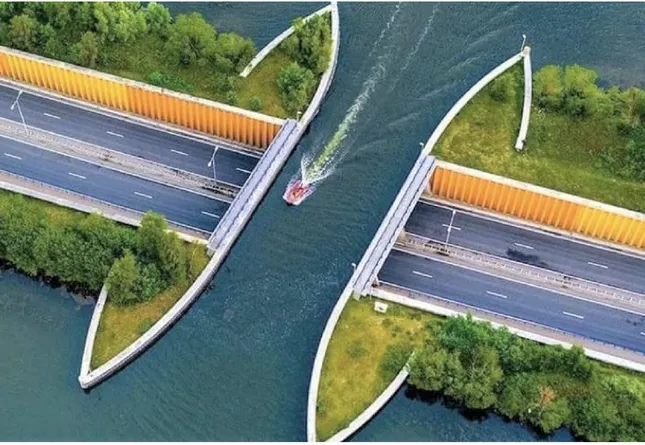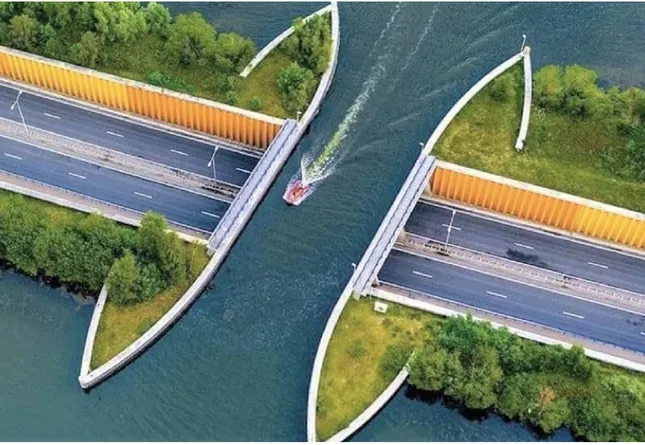The design of the bridge comprises two parallel spans, each with a width of 16.5m and a separation of 11.8m. The unique feature of this bridge is the pedestrian bridge and observation deck situated between the two spans, with a width of 7.9m and a landscape architectural scale of approximately 163.84m².

3D rendering of the Trang An Water Bridge.
Previously, in late 2023, the People’s Committee of Ninh Binh City (now Hoa Lu) proposed a bold idea to construct a “water bridge,” inspired by the Veluwemeer Water Bridge in the Netherlands, at the same location. A water bridge is a unique type of transportation infrastructure where a water channel crosses over a road, creating a striking landscape and tourism attraction.
This proposal included a request for a provincial budget support of VND 130 billion to implement a synchronized technical infrastructure system for the project. However, after consideration, the Department of Planning and Investment (now the Department of Finance) and related units reported to the Provincial People’s Committee about technical, financial, and construction condition obstacles specific to the Trang An – Le Thai To intersection area.
The leaders of Ninh Binh Province acknowledged that, while technically challenging and financially demanding, the realization of a water bridge would have created a new symbol for Ninh Binh’s tourism, with tourist boats gliding on the water above while vehicles pass underneath. However, the technical complexities, high construction costs, and specific geographical and geological requirements made this option unfeasible.
Although many locals expressed disappointment at the inability to materialize the one-of-a-kind water bridge concept, the decision to opt for a solid bridge with an observation deck combined with a pedestrian bridge strikes a balance between technical factors, economic considerations, and symbolic value, adding a distinctive landscape feature to the Trang An – Hoa Lu heritage area.
















